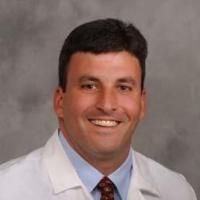The risk of risk-adjustment measures for perioperative spine infection after spinal surgery.
Date
2011-04
Journal Title
Journal ISSN
Volume Title
Repository Usage Stats
views
downloads
Citation Stats
Attention Stats
Abstract
Study design
Cross-sectional data analysis of the Nationwide Inpatient Sample (NIS).Objective
To develop a risk-adjustment index specific for perioperative spine infection and compare this specific index to the Deyo Comorbidity Index. Assess specific mortality and morbidity adjustments between teaching and nonteaching facilities.Summary of background data
Risk-adjustment measures have been developed specifically for mortality and may not be sensitive enough to adjust for morbidity across all diagnosis.Methods
This condition-specific index was developed by using the NIS in a two-step process to determine confounders and weighting. Crude and adjusted point estimates for the Deyo and condition-specific index were compared for routine discharge, death, length of stay, and total hospital charges and then stratified by teaching hospital status.Results
A total of 23,846 perioperative spinal infection events occurred in the NIS database between 1988 and 2007 of 1,212,241 procedures. Twenty-three diagnoses made up this condition-specific index. Significant differences between the Deyo and the condition-specific index were seen among total charges and length of stay at nonteaching hospitals (P < 0.001) and death, length of stay, and total charges (P < 0.001) for teaching hospitals.Conclusion
This study demonstrates several key points. One, condition-specific measures may be useful when morbidity is of question. Two, a condition-specific perioperative spine infection adjustment index appears to be more sensitive at adjusting for comorbidities. Finally, there are inherent differences in hospital disposition characteristics for perioperative spine infection across teaching and nonteaching hospitals even after adjustment.Type
Department
Description
Provenance
Subjects
Citation
Permalink
Published Version (Please cite this version)
Publication Info
Goode, Adam P, Chad Cook, J Brian Gill, Sean Tackett, Christopher Brown and William Richardson (2011). The risk of risk-adjustment measures for perioperative spine infection after spinal surgery. Spine, 36(9). pp. 752–758. 10.1097/brs.0b013e3181e030b3 Retrieved from https://hdl.handle.net/10161/31401.
This is constructed from limited available data and may be imprecise. To cite this article, please review & use the official citation provided by the journal.
Collections
Scholars@Duke

Adam Payne Goode
Dr. Goode is an Associate Professor in the Department of Orthopedic Surgery. He is a physical therapist by clinical training and epidemiologist by scientific training. His focus is on understanding the etiology of low back pain and other chronic musculoskeletal conditions and improving the delivery of care for patients with acute and chronic musculoskeletal conditions. In his research he has published in the areas of the relationship between individual radiographic features in the lumbar spine and clinical symptoms, biomarkers and peripheral joint osteoarthritis.

Chad E. Cook
Dr. Cook is a clinical researcher, physical therapist, and profession advocate with a long-term history of clinical care excellence and service. His passions include refining and improving the patient examination process and validating tools used in day-to-day physical therapist practice. Dr. Cook has authored or co-authored 3 textbooks, has published over 315 peer reviewed manuscripts and lectures internationally on orthopedic examination and treatment.

Christopher Robert Brown
As an orthopaedic specialist and spine surgeon, I am committed to providing the best possible outcome for my patients with the least invasive surgery possible. I treat patients using the latest minimally invasive surgical techniques. Among the conditions I see in my patients are cervical radiculopathy and myelopathy, and traumatic spine injuries. Among the procedures I perform are complex cervical reconstruction, disc replacement surgery, minimally invasive scoliosis surgery, motion preservation spine surgery, and metastatic and tumor surgery.
Unless otherwise indicated, scholarly articles published by Duke faculty members are made available here with a CC-BY-NC (Creative Commons Attribution Non-Commercial) license, as enabled by the Duke Open Access Policy. If you wish to use the materials in ways not already permitted under CC-BY-NC, please consult the copyright owner. Other materials are made available here through the author’s grant of a non-exclusive license to make their work openly accessible.
